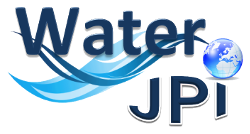IMDROFLOOD
| IMDROFLOOD: Improving Drought and Flood Early Warning, Forecasting and Mitigation using real-time hydroclimatic indicators | |||||||||
|
Project presentation: IMDROFLOOD |
|||||||||
 |
Coordinator: Sergio M. Vicente Serrano | ||||||||
| Projects Partner and Institution: Sergio M. Vicente-Serrano (Spanish National Research Council) |
|||||||||
|
Key words: flood; drought; meteorological prediction; hydrological modelling; drought indices; remote sensing; atmospheric mechanisms; natural hazards |
|||||||||
|
|
|||||||||
|
|
|||||||||
|
Abstract: Strengthen drought and flood forecasting and early warning is essential to improve adaptation to climate change. IMDROFLOOD plans different actions to improve the mitigation of the impact of droughts and floods at the catchment level. All these actions will be implemented in different catchments of Europe and South Africa, covering contrasted environmental conditions and specific problematic. IMDROFLOOD will make use of currently available information sources on meteorological, hydrological and remote sensing data to generate new information relevant for flood and drought risk management. New monitoring networks and Doppler radar images will be tested for the generation of more suitable and operative drought indices and the role of ecosystems and vegetation communities in the mitigation of the impact of floods and droughts will be assessed, while probabilistic flood forecasting systems will be developed, integrating all these tools to implement a powerful Early Warning System. IMDROFLOOD adapts to different research priorities, developing innovative tools, including nature-based solutions and using different sensor technologies monitoring networks with the purpose of mitigating the impact of extreme events. IMDROFLOOD will obtain drought indices for different sectors useful for drought monitoring and early warning and will integrate short and medium term meteorological predictions with eco-hydrological rainfall-runoff models and numerical simulations for better flood prediction. IMDROFLOOD will also assess the role of vegetation communities and ecosystems on drought and flood impacts and it will develop drought vulnerability curves for natural ecosystems. These tasks will allow designing efficient drought and flood early warning and forecasting systems and produce information for helping in planning for risk management at the catchment scale. IMDROFLOOD is organized in eight Work Packages and it uses a transdisciplinary approach that includes innovative in-depth studies that combine drought and flood analyses from local to river basin levels. The outcome of this project will be not only basic research. Besides, the projects aims at putting this knowledge into work and will develop information tools based on server-side technologies that are basic for a sound management of flood and drought risk, and will do this in close collaboration with the stakeholders and end-users to ensure an adequate uptake of the new products developed. |
|||||||||
|
Project structure: |
|||||||||
|
Implementation: The overall management of IMDROFLOOD aims at ensuring high quality interdisciplinary research and optimising the integration and usefulness of the project outputs throughout the project period. The management structure of IMDROFLOOD aims at facilitating the co-operation between partners while maintaining a strict control of gradual achievements of the project objectives. Project management will be carried out through the coordination work package (WP1). Its primary objective will be to ensure that the activities carried out in the various work packages are fully integrated towards a common purpose and hence that the project delivers the full benefits to the users and wider community of the extensive and innovative research carried out within IMDROFLOOD. WP1 will also provide the top level management of the project to ensure that it is carried out effectively and efficiently. The project coordinator (PC) will be in charge of the day-to-day management of the entire project. A Steering Committee (SC) will be chaired by the PC and will consist of the PC plus the other WP leaders. The SC is the forum for scientific discussions and co-ordination between WPs with the aim of optimising the output of the project, by using the resources available in the most cost-effective way. The SC shall meet physically at least every 12 months and bi-monthly by teleconference and extraordinary meetings could be requested by any of its members. The WP leaders will be responsible for ensuring a smooth work flow within the sub-components of their WPs and, with the help of the PC, will be responsible for communicating all relevant results, data, and methodologies across work packages. Moreover, the WP leaders will be responsible for the detailed co-ordination, planning, execution, monitoring and reporting of the WPs (including contributions to progress reports). To limit the risks associated with an international cooperation project, effective inspection and supervision will be carried out, including: i) regular progress meetings; and ii) regular technical and financial progress reports. Finally, an Advisory Board (AB) with three external experts will be created. The AB will physically meet three times during the duration of the project (kick-off, midterm and at the end). |
|||||||||
| Outcome/deliverables: WP1:i) 4 reports and action lists from annual partners meetings; ii)3 annual reports; iii)IMDROFLOOD project website. WP2: i) geospatial assessment and gap analysis; ii) implementation of the Spatial Data Infrastructure (SDI); iii) climatic, hydrologic and remote sensing data ready for upload; iv) software infrastructure to update real time information. WP3: i) drought indicators based on new observation networks and radars; ii) remote sensing indices to monitor droughts in the basins; iii) integrated sectorial drought indices for drought monitoring. WP4: i) methodology to integrate dynamical and statistical weather forecasts; ii) weather forecasting validated; iii) short and medium-term meteorological prediction system. WP5: i) integration of meteorological predictions in hydroecological modelling; ii) open source hybrid model with IBER and DualSPHysics created; iii) flood prediction system, iv)a model with a user-friendly interface to implement different construction solutions. WP6: i) assessment of vegetation vulnerability to drought based on remote sensing images and hydro-ecological modelling; ii) a collection of maps on vegetation resistance and resilience to drought; iii) assessment of hydro-ecological models and remote sensing images to determine impact of vegetation on hydrological floods and droughts; iv) response of hydrological droughts and floods to climate hazards depending on the different plant communities. WP7: i) a structured web site and a set of basic routines and guidelines for data integration and processing in the following tasks; ii) systems of monitoring and early warning of drought and flood forecasting for different catchments. WP8: i) stakeholder engagement sessions held; ii) for each basin, capacity building sessions held and report produced; iii) papers published in peer reviewed journals; iv) IMDROFLOOD special issue; v) IMDROFLOOD conference held; vi) 4 newsletters produced; vii) cross thematic research linkages with other EC projects documented. |
|||||||||
|
References coordinator and leaders of each WP: |
|||||||||
|
Contact Point for Communication/Dissemination activities: Fernando Domínguez-Castro (CSIC) |
|||||||||
|
Contact Point for Open Data/Open Access activities: Fernando Domínguez-Castro (CSIC) |
|||||||||
|
Results of the project: Data and resources |
|||||||||
